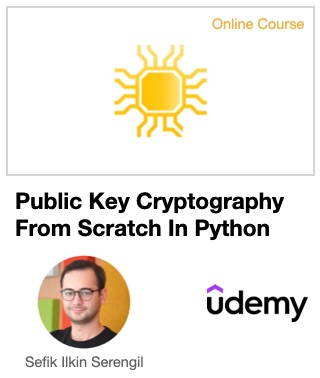Elliptic curves are coming with many different forms in mathematical foundations. They all have different mathematical proofs and addition formulas. Weierstrass, Koblitz, and Edwards are different forms of elliptic curves, which are mathematical curves used in modern cryptography. Each form has its own advantages and disadvantages in terms of security, efficiency, and ease of implementation. In this post, we are going to talk about the common elliptic curve forms in elliptic curve cryptography.

Vlog
Weierstrass
Weierstrass is the most widely used form of elliptic curves in cryptography. It is defined by the equation: y2 = x3 + ax + b, where a and b are constants.
🙋♂️ You may consider to enroll my top-rated cryptography course on Udemy

Weierstrass has been widely adopted in various cryptographic protocols, making it compatible with many existing systems. There are many efficient algorithms and hardware implementations available for Weierstrass form, making it a popular choice for practical implementations.
Weierstrass form may not be the optimal choice for certain applications, such as low-resource environments or constrained devices, due to its relatively large size and computational overhead. This form may be vulnerable to certain types of attacks, such as side-channel attacks or attacks exploiting the mathematical structure of the curve.
In ECDSA, we are using elliptic curves in Weierstrass form.
Koblitz
Koblitz form is a specialized form of elliptic curves that is defined by the equation: y2 + xy = x3 + ax2 + b, where a and b are constants.
This form is particularly efficient for implementation over binary fields, which are commonly used in some cryptographic applications, such as certain types of pairing-based cryptography. Koblitz form allows for shorter scalar multiplication, which is a key operation in elliptic curve cryptography, compared to Weierstrass form. This can result in faster cryptographic operations in certain scenarios.
This form is less widely supported compared to Weierstrass form, and it may not be compatible with some existing systems or standards. Koblitz form has limited choices for parameter selection, which may limit its flexibility and security in certain scenarios.
Edwards
Edwards form is another specialized form of elliptic curves that is defined by the equation: x2 + y2 = c2 (1 + dx2y2), where c and d are constants.
This form provides improved security against certain types of attacks, such as side-channel attacks and some forms of implementation attacks, compared to Weierstrass and Koblitz forms. Edwards form allows for unified arithmetic operations, where addition and doubling of points can be done with the same operation, making it more efficient in terms of hardware or software implementation.
This form may be less efficient for scalar multiplication, which is a key operation in elliptic curve cryptography, compared to Weierstrass and Koblitz forms. However, recent research has shown that optimized Edwards curve constructions can achieve competitive performance. Edwards form is less widely supported compared to Weierstrass and Koblitz forms, and it may not be compatible with some existing systems or standards.
In EdDSA, we are using its variation twisted Edwards curves.
Conclusion
So, all forms are different representations of elliptic curves, each with its own advantages and disadvantages. Weierstrass form is widely supported, efficient in arithmetic operations, but may not be optimal for certain applications and may be vulnerable to some attacks. Koblitz form is efficient for binary fields and allows for shorter scalar multiplication, but is less widely supported and has limited parameter choices. Edwards form provides improved security in certain scenarios, has unified arithmetic operations, but may be less efficient for scalar multiplication and is less widely supported
Support this blog if you do like!


